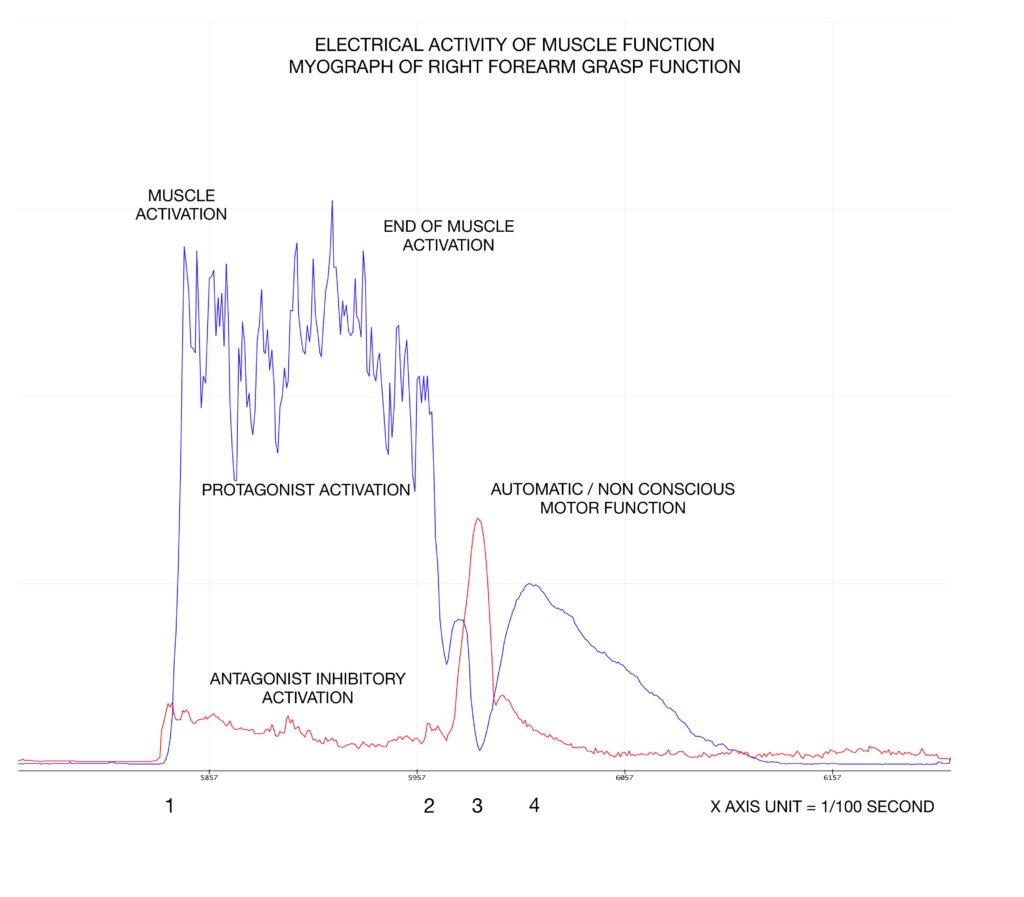A casual examination of the control of muscle function would lead one to the concept of this control as a switch – you turn on or off the specific function. However, the actual electrical control of muscle action is quite a bit more interesting. A few things have to happen. These are shown in the electromyograph below. The blue line is the muscle firing, and the red line is its opposing muscle:
- When the muscle fires (blue line), its antagonists (muscles that perform the opposing action, red line) need to actively inhibit their function at the same time.
- The firing muscle requires an ongoing series of impulses (about 10 per second, 10Hz) to maintain this action. This is the jagged area of the blue line. The antagonist also needs a continuing series of impulses to inhibit its function.
- When the firing completes, the antagonist briefly fires to reset the articulation to a neutral position (red line at ~5970).
- After the antagonist fires, the agonist (muscle from bullet 1) again fires to reset the relationship between the two muscles. Steps 3 and 4 take about 2 seconds to cycle through.
These measurements are taken with 2 Myoware Sensors, providing analog outputs to an Adafruit Arduino board.

